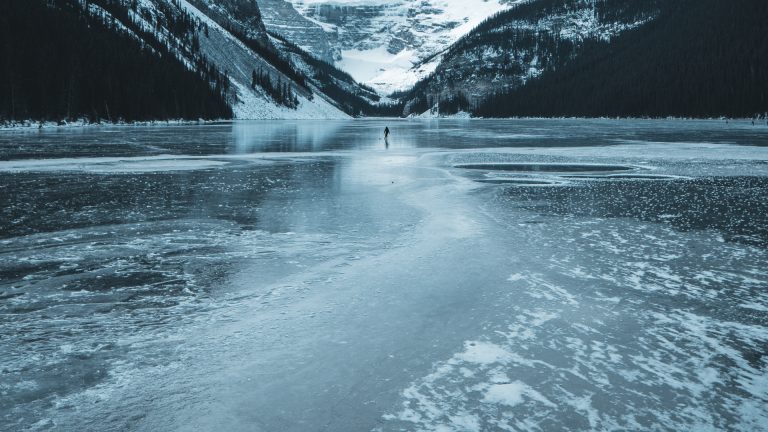When walking across a frozen lake, never judge ice by looks alone. Although the motto, “ice that is thick and blue is tried and true” is a good rule to go by, it’s not worth risking your life for a stroll across these chilled waters.
What happens to your body when you fall in? How long could you possibly survive? And why do you need ice picks?
People go on the ice for different reasons. They fish, they skate, or they take a shortcut to where they’re going. And sometimes they fall in by accident, if they ski off course or a car skids off a road. Oh no. There are things you can do that will help you to survive.
Step 1. Remember 1-10-1
The 1-10-1 rule is a quick way to remember the three initial phases of being immersed in cold water. Minute one, known as “cold shock,” is a big jolt to your body as it feels the icy water. This is when hyperventilation begins, which is breathing between 600-1,000% greater than regular breathing. After ten minutes in the water, cold incapacitation occurs. You’ll lose sensations and movement in your fingers, arms, and legs. It can take up to one hour for hypothermia to set and you become unconscious.
Step 2. Keep Your Head Up
If at all possible, try to keep your head above water to delay the onset of hypothermia. Hypothermia has three stages. When it’s mild, your body temperature is about 35 °C (95 °F) or less, and you’ll be shivering, developing blue skin and confusion. Moderate hypothermia sets in when your body temperature drops to 32°C ( 89.6°F), and the onset of sleepiness and hallucination can make you pass out. Severe hypothermia sets in when your body temperature drops down to 28°C (82.4°F). You are now at risk of cardiac arrest.
Step 3. Get Out Quick
Getting out of the water as fast as possible is imperative to avoid hypothermia. Try to find the hole you fell into, and pull yourself out. If you can’t, let’s hope that someone else will help pull you out.
That happened to Anna Bâgenholm. This 29-year-old radiologist from Sweden, went skiing near Narvik, Norway, lost control and fell through ice. She was dragged under the water with only her legs and skis sticking out. Luckily, she was found by two friends who tried unsuccessfully to pull, her out and then called for help. Because they were in a remote area, a rescue team could not get there quickly and Anna and her friends had to wait.
She had been trapped in the ice water for 80 minutes. Even though Anna found a pocket of air so she could breathe, she went into cardiac arrest and lost consciousness after 40 minutes. Despite having been in the deadly, frigid water for 80 minutes, Anna was able to make an almost complete recovery after an extensive medical treatment.
Step 4. Look for Light
If you are under the water, look for lighter areas above. This would usually be the place you entered from, as other places could be covered in snow and look darker.
Step 5. Ice Picks are Your Friend
These picks could save your life. Push both picks into the ice, and pull yourself up horizontally while kicking your feet in a swimming motion. This way, you won’t need as much upper body strength to get yourself out of the water.
Sources
- “What Is Hypothermia? Symptoms, Signs, Treatment Protocol & Causes”. 2021. Emedicinehealth.
- “Outdoor Action Guide To Hypothermia & Cold Weather Injuries”. 2021. princeton.edu.
- “True Survival Stories – Anna Bågenholm” 2021. wild-Survivor.co.uk.
- “Hypothermia-Related Deaths — Wisconsin, 2014, And United States, 2003–2013”. 2021. cdc.gov.
- “Hypothermia”. csbc.ca.
- “The Myth Of Falling Through The Ice – Fortune Bay Expedition Team”. 2017. Fortune Bay Expedition Team.
- “Respect the ice: Here are signs that ice might not be safe”. Tim, Harlow. startribune.com.


















